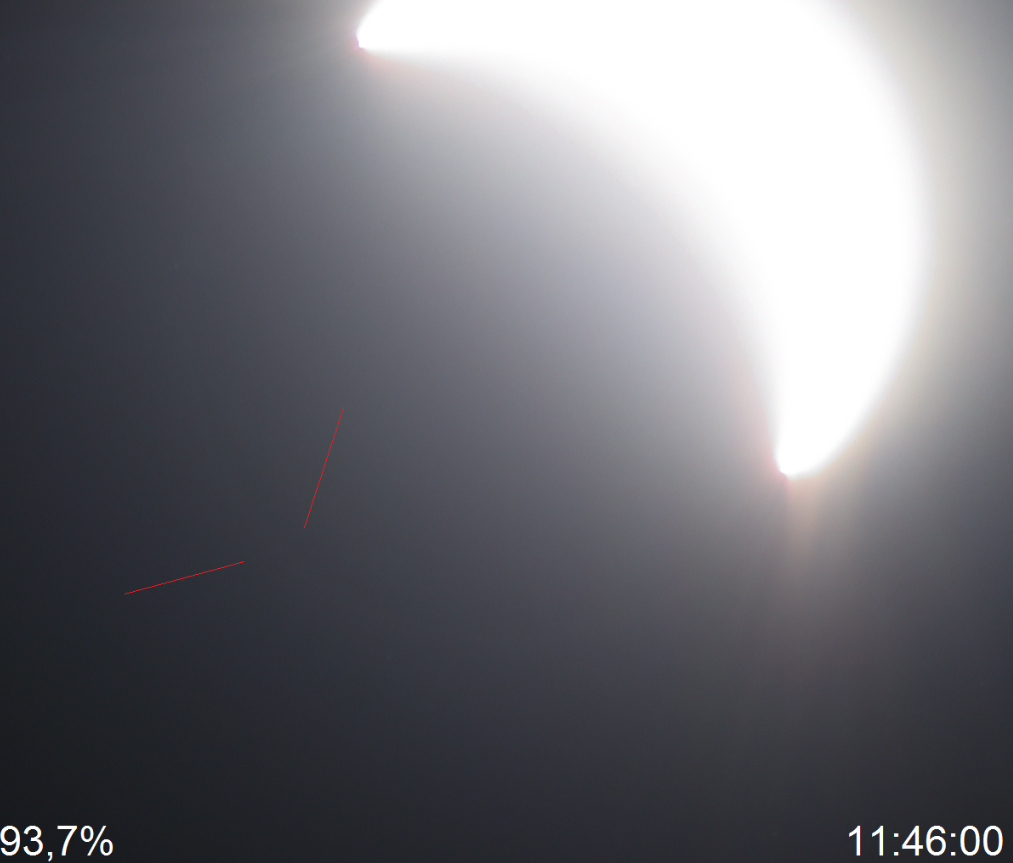Seeing a solar corona during a total solar eclipse can be an awesome experience. This view is jaw-dropping for everyone, even for solar eclipse chasers, who used to have seen it at least a few times before.
There are a lot of pictures of the amazing solar corona on the web, which amount grows up after every single totality. Unfortunately for a long time, there was no decent report of solar corona visibility outside the umbral area, except for the short period of Baily’s Beads appearance. Because Baily’s Beads can occur up to 22 sec before and after totality (for people being in the middle of the path of totality) (Pic. 1), I am considering about 30-50 sec outside of the total phase, when usually solar filters are taken up.

Having in mind, that the solar corona has a brightness nearly equal to the full Moon (-11,5 mag), it could be easily seen during the deep partial phase when the lunar disk almost fully overlaps with the solar one. Unfortunately, the solar corona, which appears on the opposite side of the crescent is literally washed out by its much stronger gleam and remains invisible to the observer for most of the time.
Situation changes, when the umbral region is close to the observer. Then the solar crescent illumination is faint enough to let another part of the solar region be visible on the opposite side of the lunar disk (Pic. 2, 3).
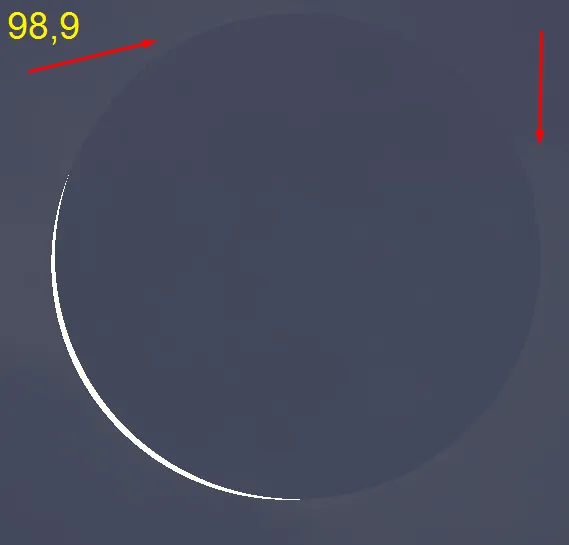
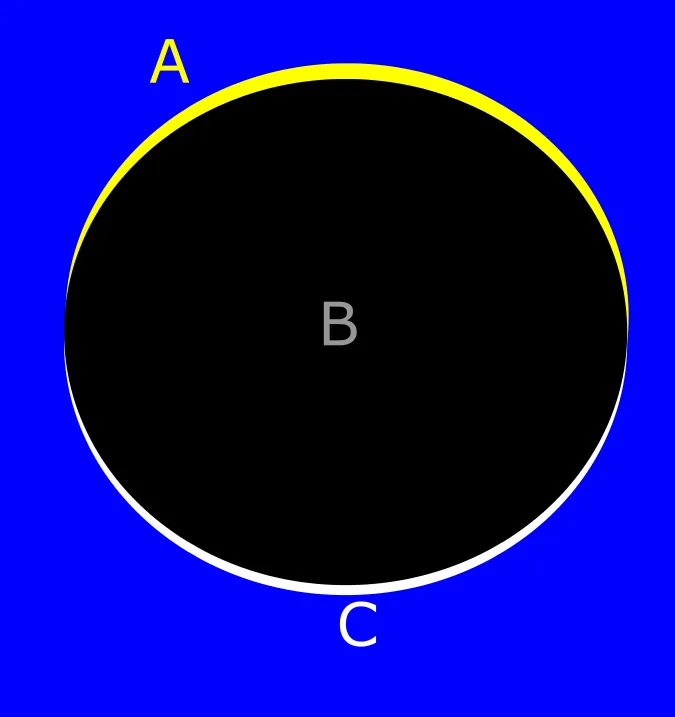
We must be aware, that the brightest part of the solar corona is situated just above the photosphere. So the explicable fact is, that as the solar crescent is thicker, the chances to see a corona outline are smaller, not only because of sunlight strength. Anyway, solar radiation remains the main factor enabling or not to see something special on the opposite side of the crescent. Another factor, being as an outreach of solar radiation is an atmosphere (medium) presence, which causes intense light scattering (on the air molecules or haze) as the light grows, especially within the nearest vicinity of the illumination source.
Watching some footage on Youtube I noticed, that solar corona outline can be visible up to about 3min after totality, which means upon around 96% obscuration. The best proof of this phenomenon has been reported by Daniel Fisher during the 2017 annular solar eclipse in Argentina. He captured a solar corona and prominences, being visible just before 2nd contact when solar obscuration was turning 97% (Pic. 4, 5). These pictures were a serious inspiration for me to carry out a full observation and set a threshold of solar corona visibility against the obscuration value.

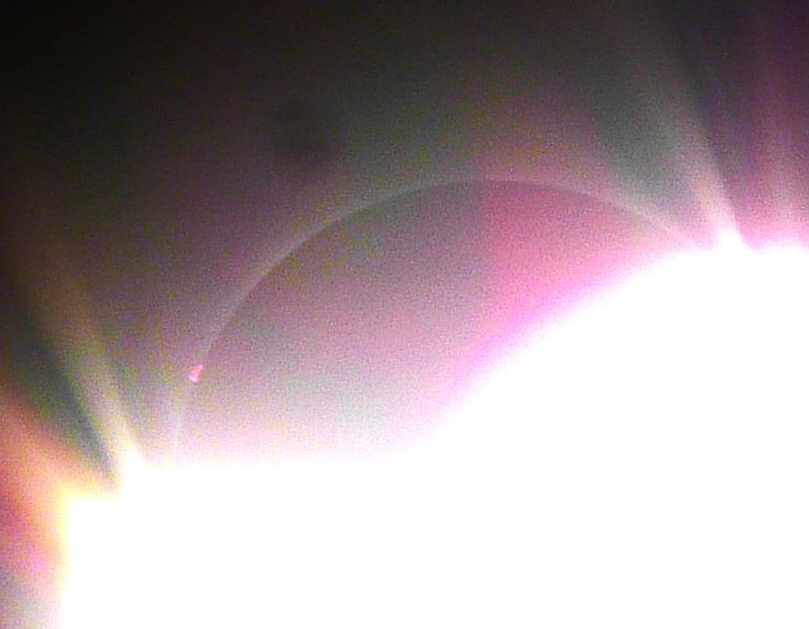
The aforementioned images have proven, that both solar corona and solar prominences are to be visible also during annular eclipses, although not in all cases, which I will explain below.
During the 2017 Great American Eclipse, I was fortunate to manage this kind of observation, which is obviously dangerous. Before I show my results, I would like to assure you, that in spite of direct sunlight hazards, there are two tips & tricks, Thanks to them you will able to see the solar corona outline:
– If you don’t have a binocular just block the light coming from a thin solar crescent by your thumb and try to spot a fuzzy arc next to your thumb. It should work at least 2 min before or after totality.
– When you have a binocular do it analogically, but the very important thing is placing the sunlight outside your view because otherwise, it can be dangerous for your eyes! Your hand may shake, so I advise you to use a tripod. A binocular will enable you to see a discernable fuzzy arc even up to 5 min before or after totality. A DSLR long lenses work analogically. A helpful thing here is a light-fall, that can prevent you from direct sunlight, coming from the crescent. The option with binoculars is the last one, that can be safe enough. Don’t use equipment with bigger enlargement, because it can be seriously dangerous for your sight.
For my observation purposes, I used long lenses Nikkor f3.5-5.6 55-300mm for the solar corona observation outside the totality. In order to capture the solar corona next to the crescent sun, I used the light-fall feature of the Nikkor 55-300mm lens, which could save my sight and camera a bit diminishing a major light at once. At 300mm the fuzzy arc was looking big likewise you could watch it through a good binocular.
The images below show the sequence of solar corona visibility between 94% and 92% obscuration, as has been captured during the 2017 Greatest American Eclipse (Pic. 6 – 15.

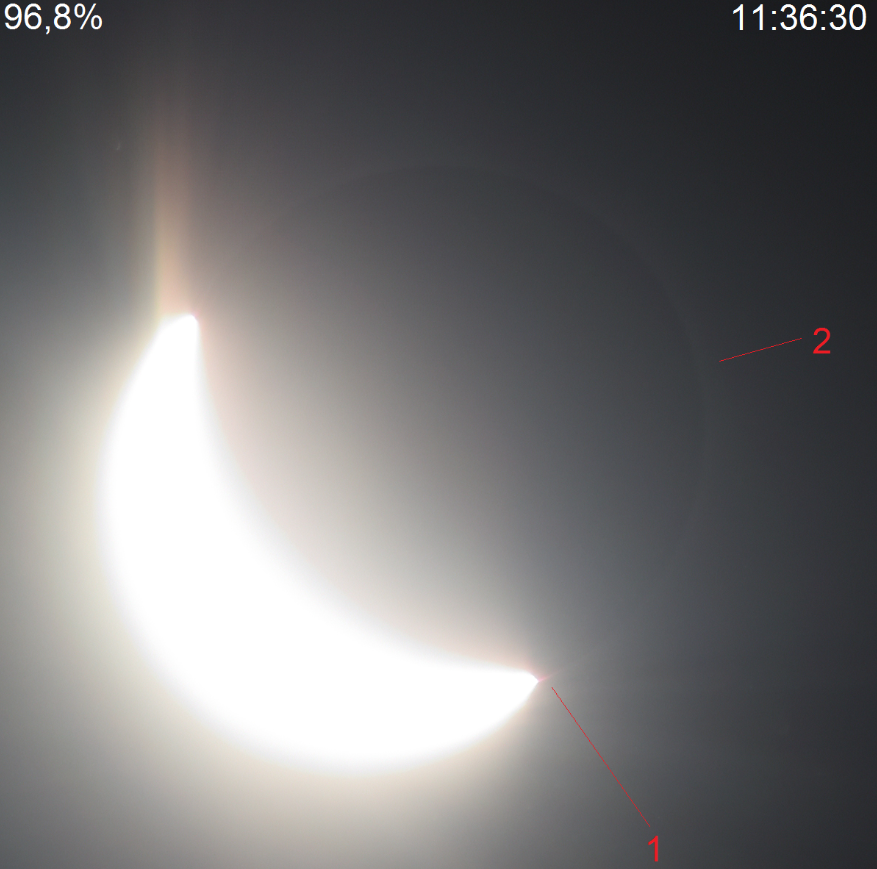
I paid more attention to capturing a solar corona outline after the totality when I carried out the observation more or less between 3 and 5 min after the 3rd contact.
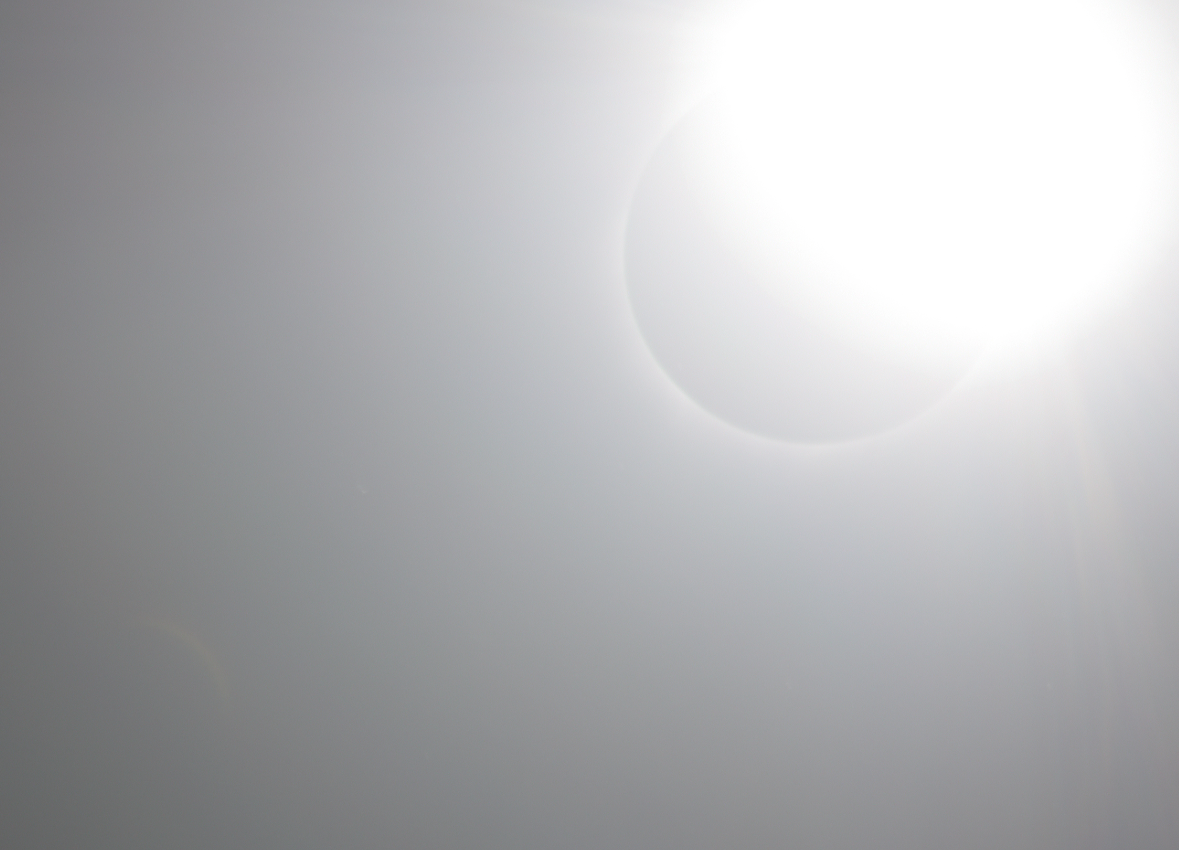

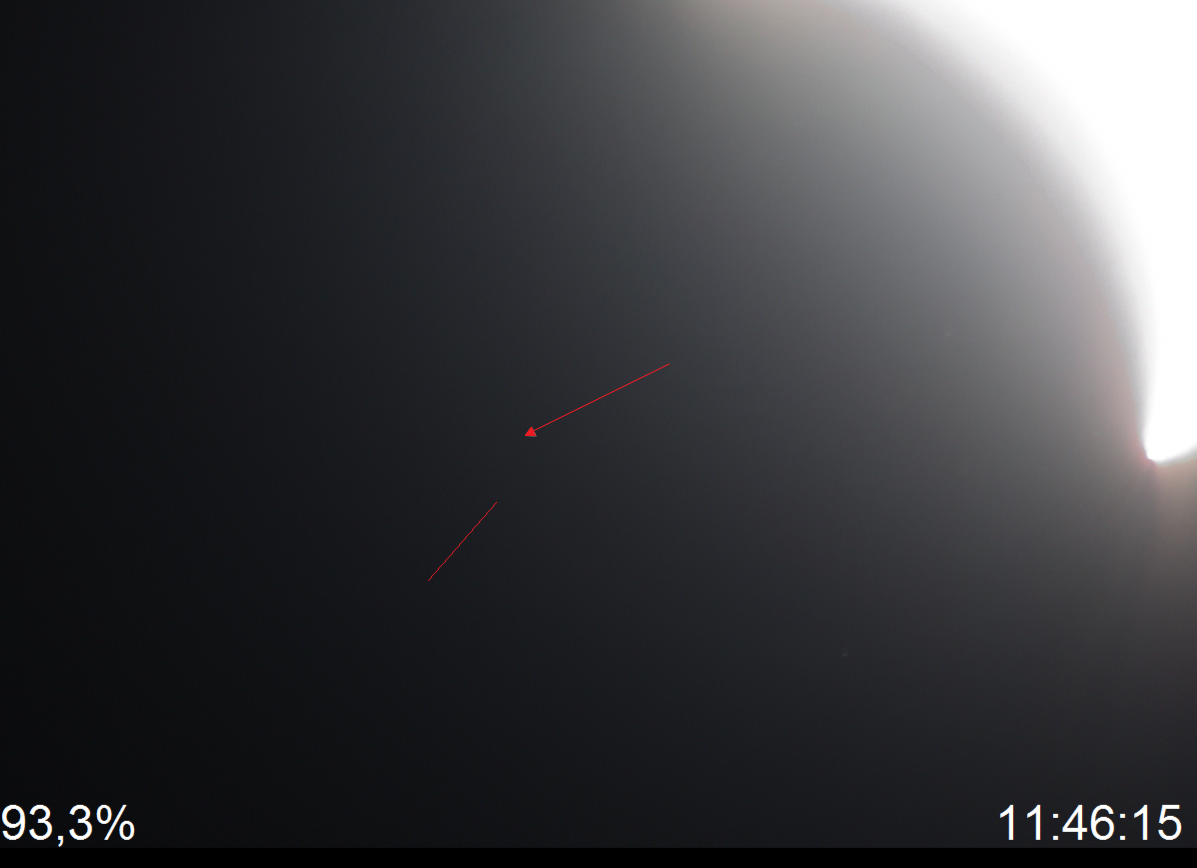
Basically, I have proven a solar corona observation of up to 93% obscuration, which corresponds to about 5 min after totality. Possibly this is still not the last time we would be able to see something bright on the opposite side of the solar crescent, but the sunlight is too bright for taking pictures, even with the light-fall feature. Moreover, as the solar crescent grows, the bright gleam (caused by forwarding light scattering on atmospheric molecules) spreads further across the sky, drawing out completely the objects emitting light in the vicinity. Hence the solar corona is no longer visible to an observer, at least in naked eye-binocular conditions (Pic. 19).

As a conclusion of this article, I would like to announce, that finally, I managed the solar corona observation outside the totality. I have gathered all my pictures together, which you can see below (Pic. 20).

I discovered, that solar corona can be visible upon 93% obscuration, which is amazing! Interesting can be also the point of the lunar and solar disk cross, where some prominences and photosphere are to be visible! This phenomenon appears to be visible upon 96% obscuration. This information is pivotal also for annular eclipse observations. Knowing, that 93% obscuration enables us to see the solar corona outline (throughout the binoculars) we can see it in the case of 80% annularities. However, is important to remember, that under annular eclipse conditions, the solar crescent is more circular, engulfing much more lunar disk, which may disrupt this kind of observation. A smaller lunar disk against the Sun means, that the prominences and corona features can be possible to see even for a bit smaller obscuration, especially just before the 2nd and after the 3rd contact. This issue definitely requires further study and observation.
Mariusz Krukar
Links:
- 2017 annular solar eclipse in Argentina – a first reports
- Ring-SoFi über Patagonien – Korona, Protuberanz & Chromosphäre inklusive! (Deutsch)
References:
- Sigismondi C., 2008, Measures of solar diameter with eclipses: Data analysis, problems and perspectives, (in:) AIP Conference proceedings







